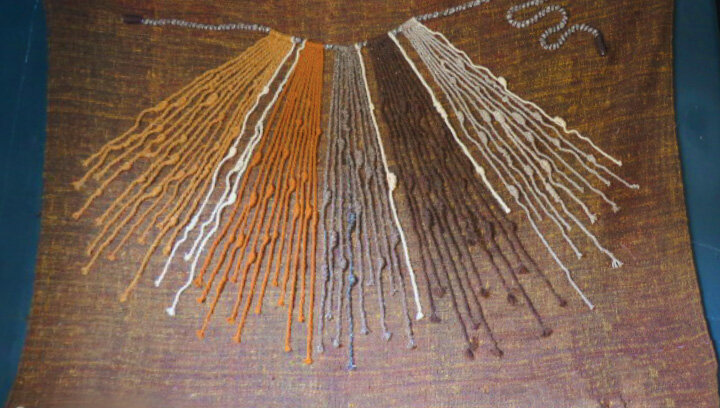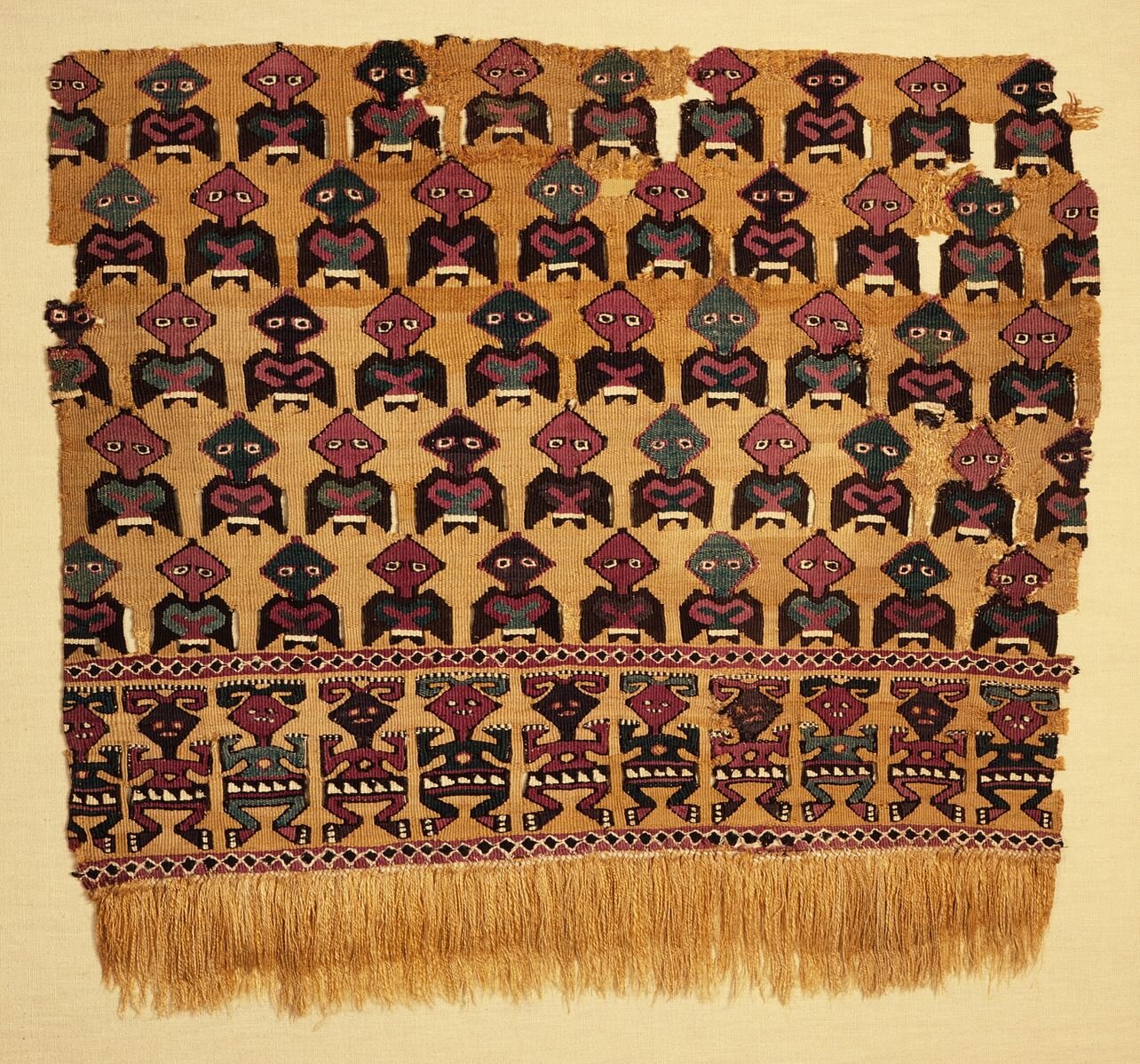Textiles in the Ancient Andes
Textiles in the ancient Andes are saturated with meaning and symbolism. The textile fragments in our collection come from the Chancay culture dating from A.D. 1100 to A.D. 1450 found in central coast valleys of present-day Peru. The Chancay people are known for their intricate and elaborate textiles and ceramics. Unfortunately, we know little about their civilization because they left no word-based writing systems behind. I think it is important to mention that textiles played an important role in message making in pre-Inca times, using symbolism and iconographic imagery to convey meaning. The Inca developed a non-linguistic based record-keeping system using fibers, cords, and knots, known as the quipu, and to this day, we have not cracked their codes to what they say about the past. It was only when the Spanish invaded the region under Inca Rule in 1532 when we see the biased perspective about the Inca Empire from a Spanish colonial lens.
These textiles are made from two primary fibers, cotton and camelid, which is spun from animal fibers such as the native alpaca. Camelid fibers dye better than cotton, which is why their textiles continue to be rich in color today. You may be wondering how these beautiful fragments have survived nearly a thousand years and why we do not find others in other regions of the world during this time? Well, because of the dry climate and ancient Andean funerary practices, these textiles and many others in the area survived across time, some still beautifully pigmented after 3,000 years.

Textiles were an essential form of symbolism to convey meaning, status, gender, wealth, and spirituality. Three common embroidered images in varying cultures are felines, birds, and serpents. Felines represent the earthly world, birds represent the celestial realm, and a snake represents the underworld. Apart from these representations, there is also a high level of significance drawn to the geometric structure and symmetry. In our fragments, notice the level of layering and repetition of design; these textiles are incredibly complex and filled with meaning.
Textiles were so crucial to Andean cultures that they often recognized their state wealth through their textile qualities. The Chimú, who rose around the same time as the Chancay, used architectural motifs which their textile patterning and structures. Most importantly, textiles expressed meaning, ideas, and messages to regular people. Across the Andean civilizations, we see an essential role for textiles and textile technology in funerary contexts, which suggest a deep spiritual meaning. While their textiles seem fragmented and abstract to the modern viewer, I hope you can visualize the deeper meaning to those in the past.
Blog post by Jazlyn Sanderson
References:
Doig, Kauffmann Federico. Ancestors of the Incas: The Lost Civilizations of Peru. Lithograph Publishing Company, 1998.
Hamilton, Andrew James. Scale and the Incas. Princeton University Press, 2018.
Paul, Anne. "Protective Perimeters: The Symbolism of Borders on Paracas Textiles." RES: Anthropology and Aesthetics, (2000): 144-167.
Pillsbury, Joanne. "Reading Art without Writing: Interpreting Chimú Architectural Sculpture." Studies in the History of Art, (2009): 72-89.



